Trams, trains, buses, undergrounds, ferries, Schwebebahn (suspension railways), even a rowboat with a ‘private rower’—the options are endless. Since May 2023, the ultimate slow travel ticket, the Deutschland-Ticket, priced at €49 a month, has granted unlimited access to all regional public transport in Germany. You can even extend your journey to Austria, Switzerland, the Czech Republic, or Poland by train. Yet, the real appeal lies in the many adventurous routes that follow rivers, cross mountains, and wind past vineyards, castles, and remote towns and villages.
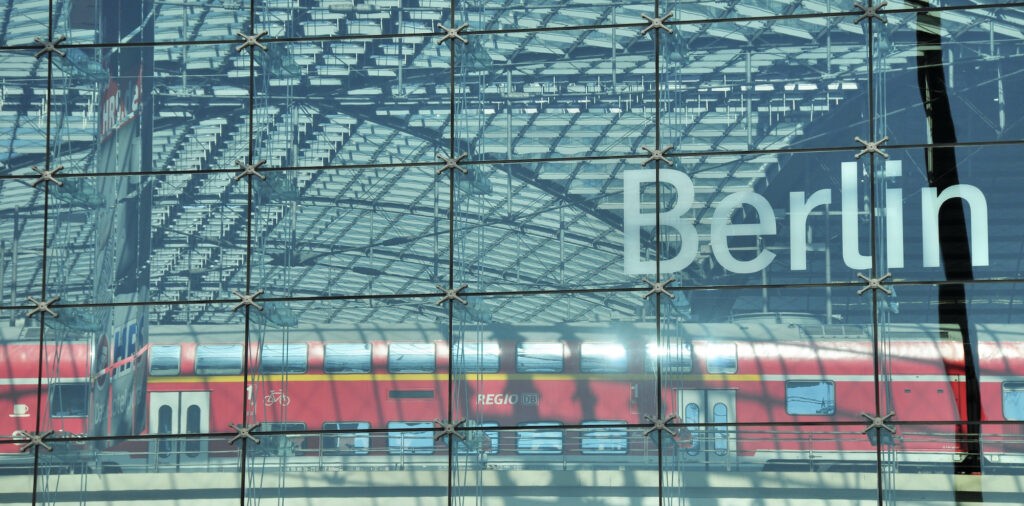
The Deutschland-Ticket is tailored to adventure seekers looking to explore Germany at a leisurely pace, using public transport as much as possible. It encompasses all regional transport options: trains, buses, trams, undergrounds, and ferries. However, it doesn’t include long-distance trains such as ICE, Intercity and Eurocity (referred to as Fernverkehr), or night trains.
The ticket is valid from Venlo and Arnhem in the Netherlands and extends its reach to Austria (Salzburg), Switzerland (Basel), Denmark, Poland, and the Czech Republic. This means you can cover vast distances for an incredibly affordable price.
The ticket is only available as a monthly subscription, with the option to cancel before the 10th of each month. You can order a ticket hassle-free at bahn.de. If you’re planning a shorter trip within Germany for just a day, consider exploring our post (in Dutch) on alternative, more budget-friendly train tickets to and within Germany.
Here are some of our favorite German public transport routes, taking you on a leisurely journey from A to B, then to C, D, E, and beyond. Each stop offers new adventures and discoveries along the way.
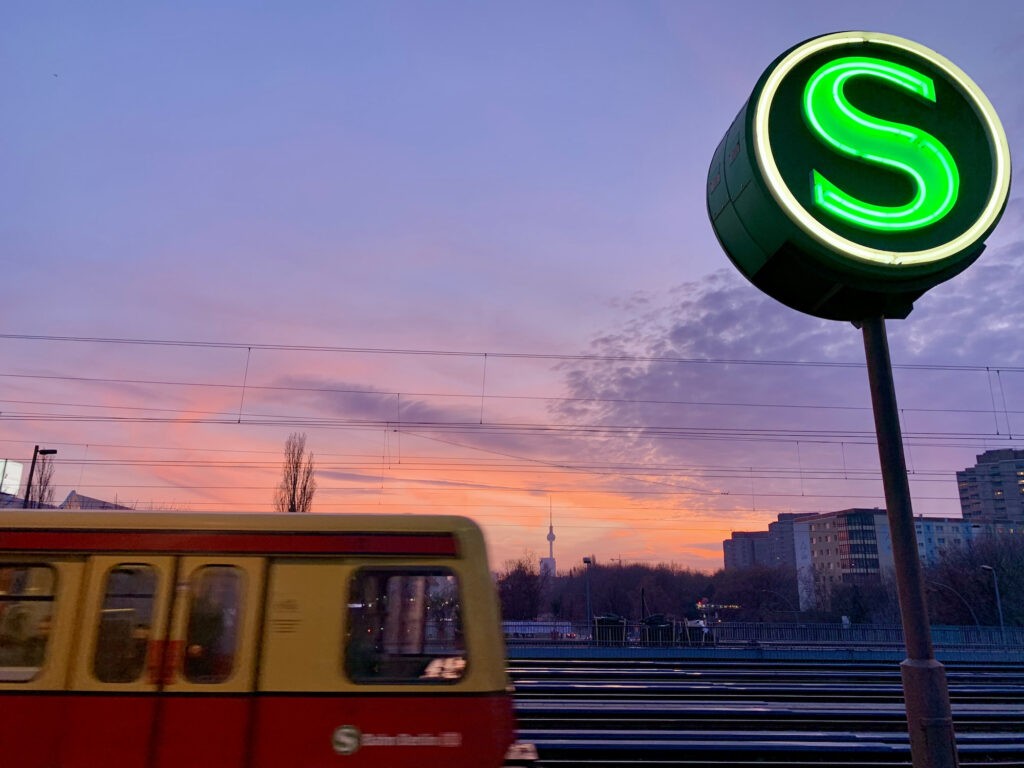
Exploring Berlin by boat
Hopping on and off: U3 (U-Bahn), S3, S5, S7 (S-Bahn), bus lines 100 and 218, and rowboat ferry F24.
Enjoy the ride: Few cities offer sightseeing possibilities by public transport quite like Berlin. Since 1882, the S-Bahn lines S3, S5, and S7 have connected Charlottenburg in the west with Ostkreuz in the east, crossing 731 brick arches, dozens of bridges, and 12 stops. Explore the spirit of the Roaring Twenties around Zoologischer Garten and Friedrichstraße, and uncover Prussian heritage on Museum Island, socialist architecture around Alexanderplatz, and the splendour of the Bundestag parliament building near Hauptbahnhof.
For years, the bus line 100 has served as the budget-friendly alternative to the typical ‘hop on hop off’ buses. It runs from Alexanderplatz, passing by various landmarks in both the former East and West Berlin. If you prefer a scenic route, opt for bus line 218 from Messe Nord to Pfaueninsel (Peacock Island), which winds through the picturesque Grunewald forest and alongside Wannsee Lake.
For fans of street art and architecture, the U3 underground line offers a unique experience, running partly above ground from Warschauer Straße in the east to Krumme Lanke in the west. Here you’ll encounter 22 distinctive stations adorned with street art, alongside numerous buildings with creative architectural designs. Alternatively, if you prefer water adventures, opt for the rowboat ferry service F24 across the river Müggelspree. Carrying up to eight people and a bicycle, these boats are manned by BVG employees with the arm muscles to show for it.
Coffee & cake: Stop by Konditorei Buchwald for the best Baumkuchen (German layer cake) along the Spree since 1852. Just hop off at Bellevue station.
Getting there: You can get to Berlin in a day from the Netherlands, Poland, Switzerland, Denmark and Austria with the Deutschland-Ticket. Just download the BVG app for all city transport.
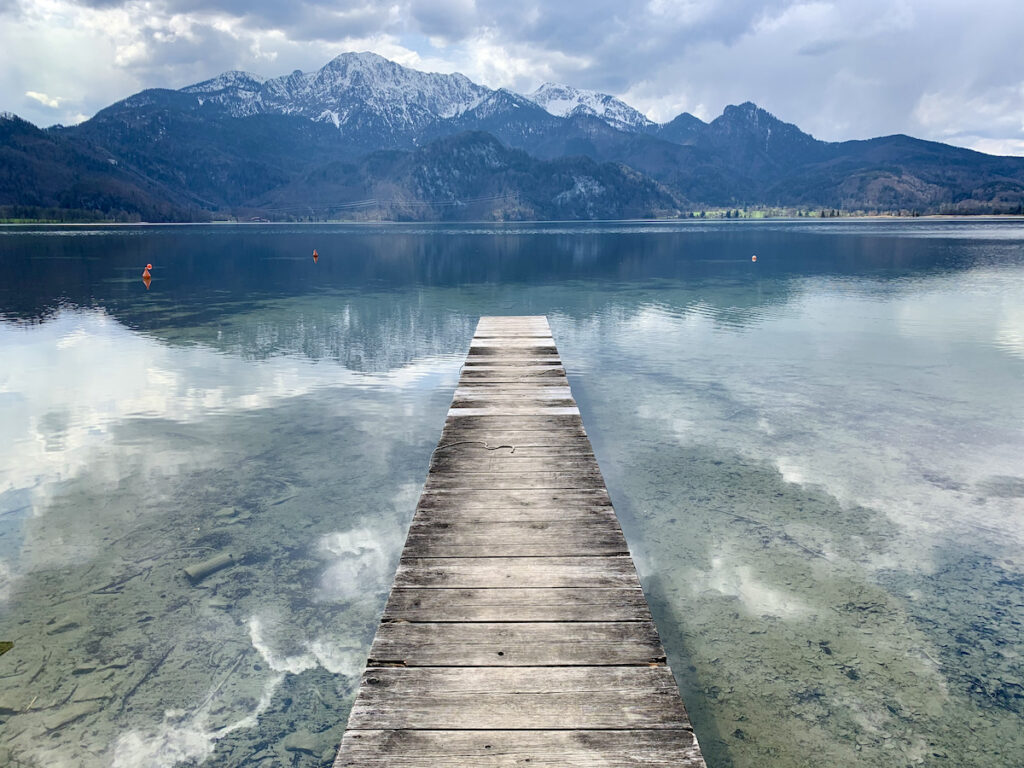
Travelling from Munich to the mountains
Hopping on and off: RB55, RB56, RB57 trains.
Enjoy the ride: Munich serves as an ideal basecamp for those craving a blend of urban and natural experiences that encircle Bavaria’s capital like a wreath. From the Hauptbahnhof, trains leave hourly heading towards the Alps. While not all of them are environmentally friendly—many rely on old-fashioned diesel—they all offer breathtaking scenery along the way.
The combined RB55-56-57 shuttle train departs hourly from Munich, offering access to three stunning Alpine destinations. As the train is quite long upon departure from Munich, it’s important to board the correct train section. All sections continue to Holzkirchen, where they divide and continue to the final destinations: Bayerischzell, Tegernsee, and Lengries. From these terminus stations, numerous hiking and cycling trails lead directly into the mountains.
The RB 55 section bound for Bayerischzell follows a picturesque route via Schliersee, offering glimpses of the crystal-clear lake along the way. From Schliersee station, a 15 km trail winds through the mountains to Tegernsee, where you can catch a train back to Munich after around 4 hours of hiking and a 700-metre altitude gain.
Coffee & cake: Don’t forget to stop at Berggasthof Neureuth for homemade cake on your hike from Schliersee station to Tegernsee station.
Getting there: You can reach Munich from the Netherlands and other countries in a day using the Deutschland-Ticket. From Venlo, it takes about 14 hours with six changes to reach the city. If you’re lucky, the route might pass through Koblenz and Wiesbaden, allowing you to enjoy the scenic journey through the Rhine Valley at no extra cost.

Cruising upstream along the Rhine
Hopping on and off: Train RB26 (or MittelrheinBahn) from Cologne to Mainz.
Enjoy the ride: The RB26 or MittelrheinBahn route remains a classic, connecting the cities of Cologne, Bonn, Koblenz, and Mainz every hour in a scenic three-hour journey. With a total of 41 stops, the route mostly follows the banks of the mighty River Rhine. Many stations along the way are worth a brief stop. In Cologne, you can climb the city’s impressive Gothic cathedral up 509 steps, explore the vibrant street art scene in the hipster district of Ehrenfeld, and finish your day with an authentic Kölsch beer.
Bonn Hauptbahnhof is right in the lively Altstadt from where you can stroll to the Beethoven-Haus, birthplace of the world-famous composer, among others, in ten minutes. At Andernach station you will find the world’s largest cold water geyser with a spout height of no less than 60 metres. You can literally take an ice-cold shower here.
Bonn Hauptbahnhof is conveniently located in the lively old town, and you can easily stroll to the Beethoven-Haus, the birthplace of the world-famous composer, just ten minutes away. At Andernach station, you’ll find the world’s largest cold water geyser, which boasts a height of 60 metres. You can take an ice-cold shower here, if you want.
After leaving Koblenz, the train takes you past UNESCO World Heritage Sites, crossing the most picturesque stretch of the river en route to the wine capital, Mainz. As you travel, you’ll pass through narrow valleys and steep slopes with vineyards, medieval castles, and quintessentially German half-timbered houses. The number of castles and palaces on this stretch alone, around 60, is quite remarkable. Many of these historical sites are open to visitors, allowing you to immerse yourself in bygone eras, and some even offer overnight stays. For hiking enthusiasts, a stop at Boppard-Bad Salzig station is a must, as it marks the starting point of the Rheinburgenweg trail, hailed by many as the most beautiful hiking trail in Germany, stretching over 200 km.
Coffee & cake: A 5-minute walk from Boppard station, you’ll find the cosy Café Zeitgeist in a historic half-timbered house dating back to 1519, with a daily selection of freshly baked cakes and pastries.
Getting there: The MittelrheinBahn journey begins in Cologne. With the Deutschland-Ticket, Cologne is easily accessible from Arnhem and Venlo with just one change in Düsseldorf. The travel time is around 2 hours and 30 minutes from Arnhem and 1 hour and 30 minutes from Venlo.
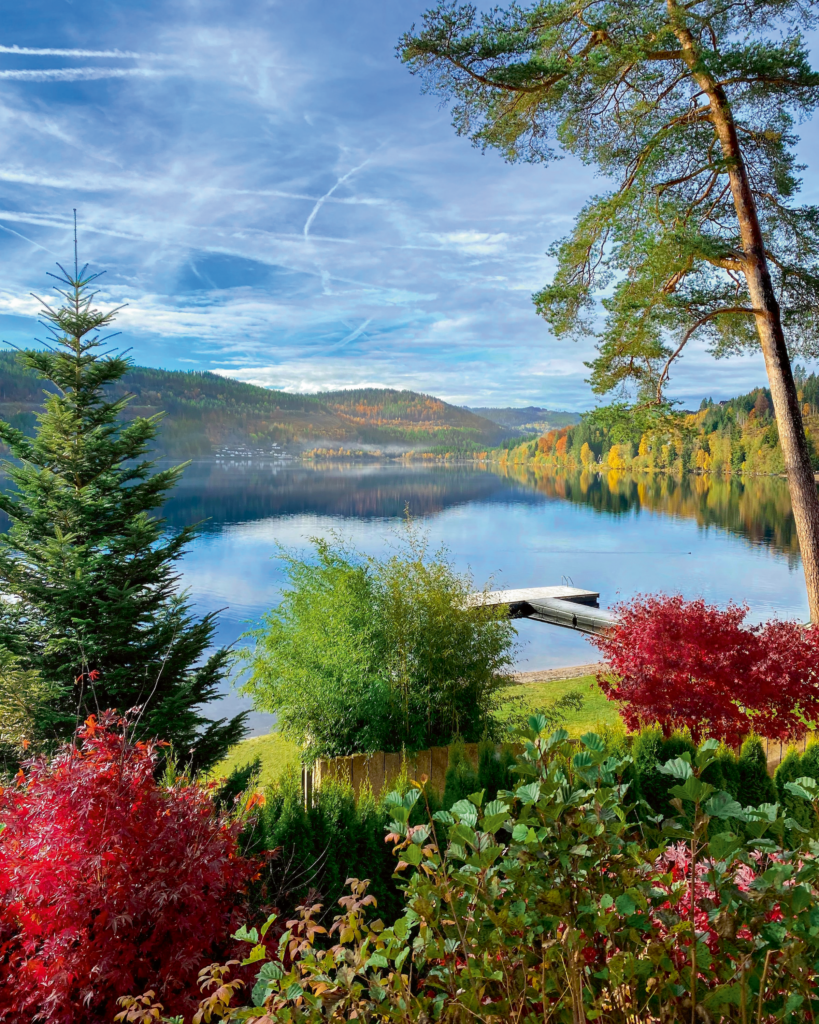
Discovering the ‘Black Forest Hell’ by boat
Hopping on and off: S-Bahn S10 or Höllentalbahn from Freiburg Hauptbahnhof to Villingen.
Enjoy the ride: The Höllentalbahn links Freiburg to Villingen once every hour, tracing one of the main trade and postal routes through the Black Forest. Departing from Freiburg, voted Germany’s most sustainable city, the train slowly climbs the nine-kilometre Höllental (Hell Valley), flanked by imposing rock formations up to 600 metres high on both sides. Legend has it that French soldiers, who frequently crossed the narrow valley, dubbed it ‘val d’enfer’ or ‘valley of hell’. At the start of the route, the train climbs over 400 metres in altitude across 12 kilometres, making it the steepest gradient in Germany. In the past, this required a rack and pinion drive to haul the train upwards, but today, an electric push is sufficient.
After hell follows the beauty of the Black Forest, flirting with you briskly through vast forests and valleys. You also cross several bridges during this ride of over an hour and a half and 76 km. The icing on the cake is the final destination Villingen, a beautiful town in the middle of the Black Forest, starting point of many hiking and cycling tours and ‘landlord’ of Germany’s highest waterfall (163m).
After passing through Hell Valley, the Höllentalbahn treats passengers to breathtaking views of the Black Forest as it winds its way through forests and across several bridges. 76 kilometres later and the train finally arrives at its destination: Villingen, a charming town nestled in the heart of the Black Forest. Villingen serves as the starting point for numerous hiking and cycling trails and is home to Germany’s highest waterfall, at 163 metres.
Coffee & cake: At Hotel Coucou‘s Kuckucksstube, in Titisee’s former railway station building, you can enjoy delicious organic Black Forest Flammkuchen.
Getting there: You can reach Freiburg from Venlo with the Deutschland-Ticket in around 9 hours, with 4 or 5 changes along the way. As a bonus, you’ll also travel along the Rhine on this route, a UNESCO World Heritage Site.

Sailing eastward along the Elbe
Hopping on and off: Tram line 4 through Dresden or S-Bahn S1 through the Elbe Valley.
Enjoy the ride: Dresden, known as the Venice of the North, offers a blend of architectural wonders, museums, and green spaces. Hop on Tram 4 for a 62-minute journey spanning 29 kilometres and 59 stops, showcasing highlights like the Frauenkirche, Zwinger, and Grosser Garten. For nature lovers, take the S1 train from Dresden Hauptbahnhof to Schöna, a scenic 45-minute ride through the Elbe Valley known for its impressive views of rock formations. Schöna serves as the last stop in Germany, with ferry access to the Czech town of Hrensko. Don’t miss Bad Schandau, gateway to Sächsische Schweiz National Park, home to the iconic Art Nouveau ‘Personenaufzug’ lift and the Kirnitschtalbahn tramway.
Coffee & cake: On tram line 4, at the Deutsches Hygiene Museum stop, you’ll find Café Milchmädchen, which serves the classic ‘Dresdner Eierschecke’, a soft egg custard cake with apples, cottage cheese, and poppy seeds.
Getting there: Dresden is reachable with the Deutschland-Ticket in approximately 11-12 hours from Arnhem, with 4 changes, or from Venlo in about the same time with 6 changes.
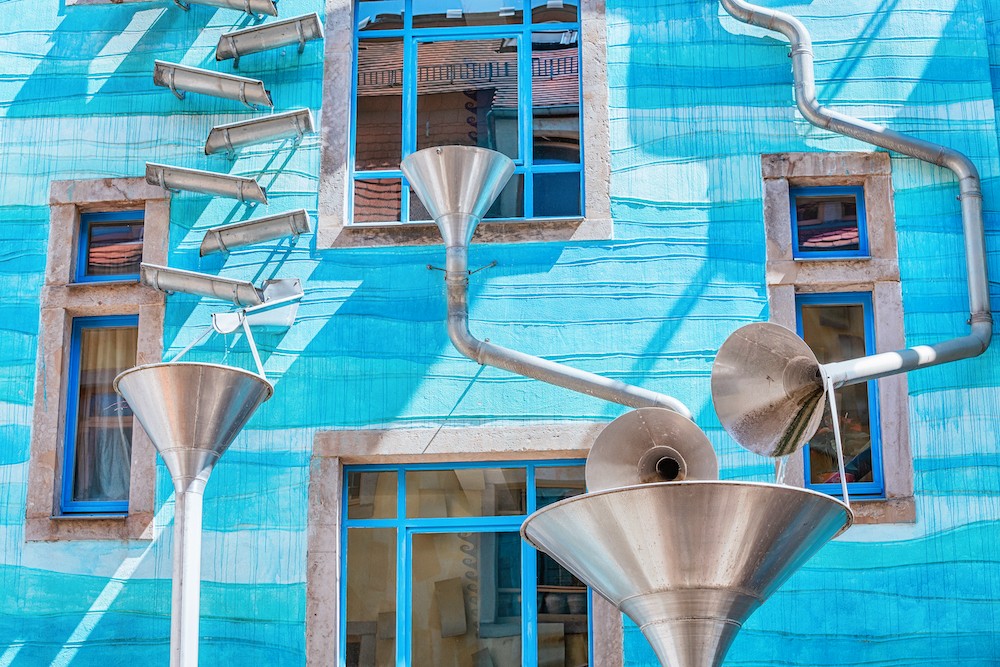
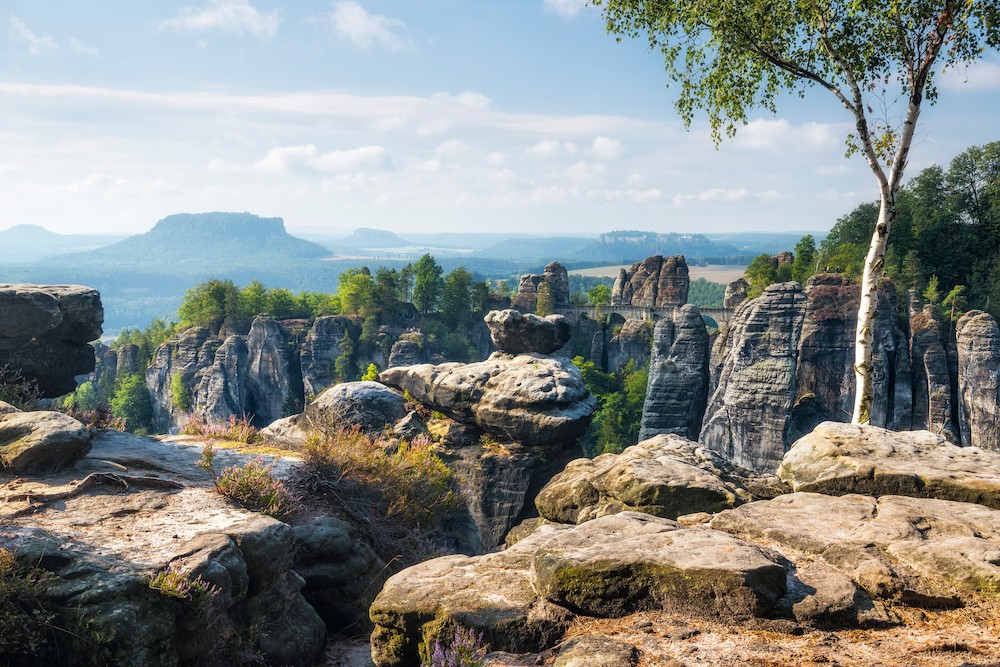
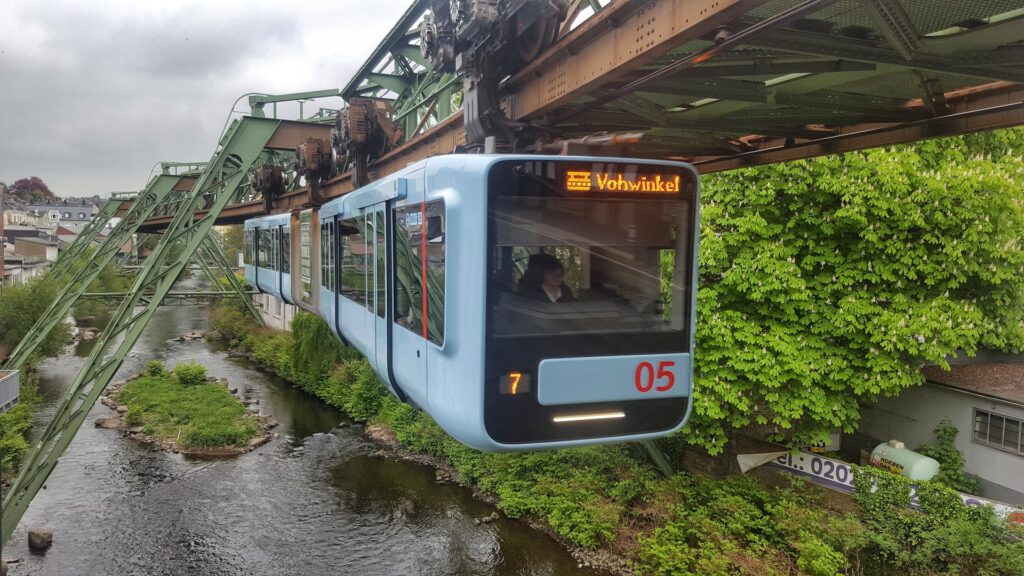
More slow travel adventures
- In Wuppertal, you can ride the Wuppertaler Schwebebahn, a unique suspended railway system with 20 stations, opened in 1901.
- In Aachen, catch the NRW Express (RE1) for quick trips to cities like Cologne, Duisburg, Essen, Dortmund, and Hamm, perfect for exploring industrial landmarks like the Landschaftspark in Duisburg or Zollverein in Essen.
- From Hamburg-Altona, take the RE6 through the Wadden Sea to Sylt or visit the Baltic Sea islands of Rügen and Usedom by train.
- For Bauhaus architecture, explore cities like Dessau, Leipzig, Jena, and Weimar, all well-connected by regional trains.
- In Koblenz, hop on the hourly RE 11 train via Cochem and Trier, following the scenic Moselle River to Luxembourg. Journey time is around 2 hours, and it’s worth noting that trains are free in Luxembourg, allowing you to travel the entire route at no extra cost. Consider stopping in Neef to taste local wine in neighbouring Bremm, home to Europe’s steepest vineyard.
- Experience the scenic Schwarzwaldbahn (RE2) through the Black Forest, particularly impressive between Hausach and St Georgen with its tunnels and loops.
Criss-crossing Europe by rail
The Deutschland-Ticket is already valid from Venlo and Arnhem. With this ticket, you can also reach destinations such as Austria (Salzburg), Switzerland (Basel), Denmark, Poland, and the Czech Republic. Planning your trip is easy using Deutsche Bahn’s journey planner. Simply select the ‘means of transport’ option for ‘regional transport only’ to get a comprehensive overview of your journey with the Deutschland-Ticket.
For example, you can reach Basel from Venlo in about 11 hours with 4 or 5 changes; Salzburg can be reached from Venlo in 14.5 hours with 6 changes.
Photos: Bart Giepmans, Shutterstock


Leave a Comment